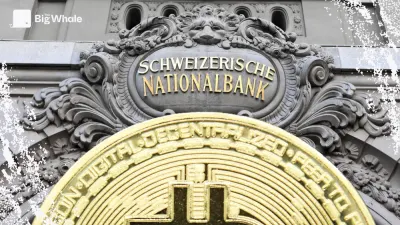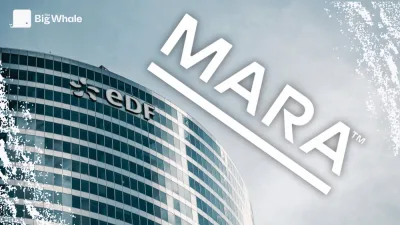TBW - Pendle vs Spectra: the match of tenfold yield protocols

As decentralised finance (DeFi) continues to grow, yield management has become one of its most transformative frontiers. Two protocols - Spectra and Pendle - are pioneering different approaches to transform the way users interact with yield-generating assets.
Both protocols divide yield-generating tokens into Principal Tokens (PT) and Yield Tokens (YT), mirroring traditional finance concepts such as bond stripping and interest rate swaps in DeFi. This separation creates distinct options for different user needs.
- Principal Tokens (PT) provide a fixed rate on a certain asset. (e.g. 4% annual return on stETH, thus taking the bet that the underlying return will fall below the current fixed PT rate)
- YT (Yield Tokens) allow you to obtain the right to receive the return on said asset (thus taking the bet that the underlying rate will exceed the current PT rate)
- LP (Liquidity Providers): they are exposed to both, earn trading fees and incentives in PENDLE or SPECTRA
Since PTs and YTs are linked, (YTs buy the right to obtain the underlying yield) buying YTs drives up the price of PTs, and vice versa.
In practice, this means that PTs are a good option for investors looking for fixed yields such as locking in a 4% annual yield on stETH, while YTs allow speculation on yield movements such as the increase in staking rewards stETH and being in this case on average higher than 4% (YTs only make profits if the underlying rate during the holding period is higher than the PT rate).
In the case of airdrops, buying YT virtually buys points. You are then speculating that the airdrop will earn you more than what the PT pays.
PTs and YTs work like bonds, in that they both have a maturity date on which they expire.
Although the two protocols share this basic framework, they take different approaches to implementing it. This analysis aims to uncover their unique strategies, strengths and differences while highlighting their wider importance to the DeFi ecosystem.
Introduction
Pendle
Pendle is a DeFi protocol that allows users to manage their return generating assets. The protocol establishes a liquid market to trade yield independently by tokenising it through a unique process that splits the principal (PT) and yield (YT) components.
Pendle allows users to speculate on yield changes, lock in fixed yields and even earn more yield by supporting a wide variety of yield generating tokens.
The protocol lays the foundation for advanced yield strategies by bringing the sophistication of the interest rate derivatives market, an industry worth around $600 trillion, thanks to its accessibility-focused design and approach.
>> Read our fundamental analysis of Pendle
Spectra
Spectra is a DeFi protocol centred on ERC-4626 tokens, the standard for interest-bearing assets. The protocol enables the creation of pools for these tokens, facilitating yield trading and fixed interest rate instruments through its yield derivatives: Principal Tokens (PT) and Yied Tokens (YT).
Users can switch between fixed and floating interest rates, manage their APY exposure and participate in liquidity provision. With its permissionless design, Spectra creates opportunities for liquidity providers, end users and project communities.
It is important to mention that historically, the PT and YT concept was designed and created by Spectra, although Pendle adopted it and has had greater success with it.
Yield tokenisation approach
Pendle's SY (Standardized Yield) approach
.png)
Pendle uses a two-stage process to manage yield-generating tokens. The first is token standardisation, which is a process that converts various yield-generating tokens (such as stETH or cDAI) into a standardised format using their SY (Standardized Yield) layer.
This creates a common framework for different token types. The second step is token splitting where the standardised tokens are then split into Principal Tokens (PT) which represent the initial deposit amount and Yield Tokens (YT) which represent the interest earned.
This standardisation process happens automatically when users deposit their tokens, allowing Pendle to work with yield generating tokens from different protocols.
Spectra's ERC-4626 approach
.png)
Spectra works with ERC-4626 tokens, which are standard interest-bearing assets used by protocols such as Aave and Morpho. When users deposit in these protocols, they receive tokens such as aDAI which represent both their deposit and their return rights.
The protocol divides these tokens into two components which are Principal Tokens (PT) for fixed rate returns and Yield Tokens (YT) for variable return. The use of the ERC-4626 standard allows direct pool creation and rate exchanges.
What makes them unique?
Pendle's AMM V2
Pendle's AMM V2 is specifically designed for yield generating assets, focusing on Principal Tokens (PT) and Yield Tokens (YT). The system has three key technical features:
- Dynamic PT Pricing: the MA automatically adjusts its price curve to match the natural appreciation in the value of PTs towards maturity, eliminating the impermanent loss at maturity.
- Concentrated Liquidity: A unique pool design allows users to trade both Main Tokens and Yield Tokens using the same liquidity, rather than requiring separate pools for each type. This approach simplifies trading and makes more efficient use of available funds
- Adaptive liquidity curves: The system concentrates liquidity into asset-specific yield bands. For example, suppose the expected return range for stETH is 0.5-7%, the AMM concentrates liquidity in this range for better trade execution.
The protocol includes an Order Book for peer-to-peer limit orders, complemented by an arbitrage bot that maintains price consistency between the Order Book and the AMM.
Spectra's permissionless pools
Spectra's most distinctive feature is its radically open approach to pool creation. Unlike Pendle, which takes a centralised approach to listings, Spectra allows anyone to create pools for any ERC-4626-compliant interest-bearing token.
The protocol operates as an agnostic AMM, initially relying on the Curve pool infrastructure to power efficient protocol exchanges. While the current pool model has an expiry date, Spectra plans to introduce a MetaVault model (more details later) that automates liquidity renewals, solving the challenge of non-passive liquidity provision.
Protocol performance and value accumulation
Pendle
.png)
Protocol performance
Pendle's V2 protocol has demonstrated substantial growth as we approach 2025. In just one year, its TVL has grown from around $500 million to more than $5 billion in Total Locked Value (TVL).
It currently records more than $500 million in seven-day volume across seven channels, according to data from DeFiLlama. This growth has largely been driven by traders and yield farmers using the protocol for points exposure for potential airdrops, such as Ethena. This approach demonstrates Pendle's role in priming liquidity for emerging ecosystems, a recent example is the Berachain Marketplace which launched on 8 January, which recently exceeded $500 million in TVL representing around 10% of Pendle's current total TVL.
Protocol growth has been further highlighted with a reported launch of around 200 pools across various maturities and assets in 2024. Currently, Pendle's fully diluted valuation (FDV) stands at around $900 million, with cumulative fees generated by the protocol reaching $27 million.
Value Accumulation
Pendle implements a clear value distribution model where protocol revenues are allocated as follows: 80% go to vePENDLE holders (which is a representation of a locked Pendle, up to 4 years), 10% go to the protocol treasury, 10% support protocol operations. The economic design of the protocol is centred on vePENDLE, which serves two purposes:
1 - Acts as a token sink, meaning that holding vePENDLE reduces the supply of PENDLE
2 - Provides governance and economic rights through:
- Directing PENDLE incentives to pools (and getting paid to do so)
- Earning 80% of voted pool exchange fees
- Boosting LP rewards by up to 250%
The Pendle team maintains flexibility in optimising protocol performance through incremental YT fee adjustments, dynamic fee allocations between LPs and vePENDLE, strategic implementation of protocol changes with the upcoming launch of Boros (more details later).
Spectra
.png)
Protocol performance
Spectra, previously known as APWINE, has recently seen a significant increase in Total Locked Value (TVL) from $21 million to $240 million between December 2024 and January 2025 -a more than tenfold increase in two months, according to DeFiLlama data.
The protocol has also focused on continuous integration with more channels for liquidity expansion, highlighted by its most recent integration with the Sonic channel, where it reached top 10 TVL rankings within three days of launching on the channel.
Spectra's strategy revolves around leveraging its permissionless approach to attracting capital by creating yield markets and opportunities that didn't exist on Pendle, such as the tokenisation of Morpho's Vaults yield, or AAVE's $GHO security module, or even Resolve Labs' fast-growing $USR.
For example, Spectra deployed on Base and captured significant market share even before Pendle deployed there. Some of Spectra's most used markets were then implemented on Pendle.
Spectra's fully diluted valuation (FDV) is currently $35.2 million.
Value accumulation
Following the Spectra's ongoing migration of APW and veAPW tokens to SPECTRA and veSPECTRA tokens on the Base network, the protocol business model is focused on SPECTRA and veSPECTRA tokens, with value capture across multiple streams.
SPECTRA holders can participate in governance, stake their tokens to create veSPECTRA locks, and earn various incentives.
veSPECTRA, created by locking SPECTRA, offers enhanced benefits including a share of protocol gains (3% of return token yield and 80% of protocol revenue), protocol emissions, and voting rights on governance proposals.
The ve(3,3) lock model implements a 4-year lock-in mechanism to encourage long-term commitment. In addition, veSPECTRA holders can earn third-party incentives by directing SPECTRA emissions to specific pools.
Strategy and roadmap
Pendle
Pendle has defined an ambitious and forward-looking strategy and roadmap for 2025, building on the success of its V2 protocol. Here's a breakdown of Pendle's strategy and roadmap for the year ahead:
Citadels: Expanding Fixed Returns PT
Pendle plans to aggressively expand the reach of its Principal Tokens (PTs) through the development of 'Citadels', which are distribution routes designed to bring fixed returns to new users and ecosystems. These Citadels will focus on three key areas:
- Non-EVM ecosystems: Pendle will extend PT to non-EVM channels such as Solana and TON, enabling users of these ecosystems to access fixed returns.
- TradFi integration: Pendle is developing a KYC platform to offer fixed returns to traditional finance institutions (TradFi). This includes working with Ethena to provide fixed yield capabilities for iUSDE, catering to regulated institutions.
Boros: Leveraged Yield Trading
Pendle's Boros (previously known as Pendle V3) is set to be a revolutionary addition to its suite of products, offering a 0-to-1 solution for leveraged yield trading. Unlike V2, which focuses on on-chain yields, Boros will support any type of yield, including DeFi, CeFi, and even TradFi.
Boros will initially target funding rate trading. Protocols like Ethena will be able to hedge their funding rate exposure, converting unpredictable floating yield streams into fixed funding rate yield streams. Boros is scheduled for a soft launch in April 2025, with audits already underway to ensure security and reliability.
V2 extension and ecosystem growth
Pendle is actively working to extend Master Token (MT) functionality within the DeFi ecosystem. A key initiative includes the ability to use PTs as collateral in lending protocols.
In addition, Pendle is moving away from its narrative-based strategy of 2024, which focused on specific anchor projects such as restaking point and BTCfi. In 2025, the focus will be on broader ecosystem growth and user-led narratives. Pendle's ability to help L1s and L2s bootstrap liquidity has been a key driver of growth in its ecosystem, with the most recent example being the successful collaboration with Berachain.
Spectra
The protocol's development strategy focuses on enhancing its permissionless yield market infrastructure through several key technical implementations.
In the short term, this includes the launch of MetaVaults, scheduled for Q1 2025, which introduces automated pool redeployment and YT accumulation conversion mechanisms.
The MetaVault system allows third-party curators to configure yield markets with specific parameters, solving current liquidity fragmentation issues.
The protocol implements ve(3,3) tokenomics with revenue redirection for voters, complementing its existing permissionless yield tokenisation framework.
WMA technical enhancements include pool upgrades and a new oracle system to enable permissionless listing of Master Tokens on lending markets. Market functionality will be extended with the addition of limit orders.
Medium-term technical developments focus on expanding the reach of the protocol through integration with retail platforms such as Morpho and Coinbase, alongside deployment across additional blockchain networks.
The roadmap includes the development of new yield derivatives, specifically perpetual instruments that remove expiry constraints, and structured products.
The strategy focuses on the iterative development of components that are compatible with current DeFi capabilities while positioning for future market demands through the design and implementation of new instruments.
Spectra VS Pendle at a glance

Conclusion
In critically analysing the two protocols, I think the key tension lies in their fundamental trade-offs.
Pendle's controlled environment has proved effective so far, and useful in concentrating liquidity in fewer markets, but this very strength could become its weakness if DeFi innovation accelerates beyond their curated approach (comparable to Morpho allowing any project to create its own lending and borrowing market, as opposed to AAVE's monolithic approach)
While Pendle's high TVL, fee generation and market fit are impressive, it needs to ensure it remains as agile as competitors like Spectra.
Spectra's permissionless model is compelling for its alignment with DeFi's core values, but their reliance on external MAs and potential fragmentation of liquidity pose serious scaling challenges. While their rapid growth of TVL has been remarkable, sustaining it without more robust liquidity incentives or native infrastructure could prove difficult.
The real question is not which protocol is superior, but whether the DeFi ecosystem can sustainably support the models of both protocols - a dedicated institutional-grade performance layer alongside a more experimental permissionless infrastructure. The answer is likely to depend on how yield markets evolve and whether institutional demand prioritises structured products over permissionless innovation.



